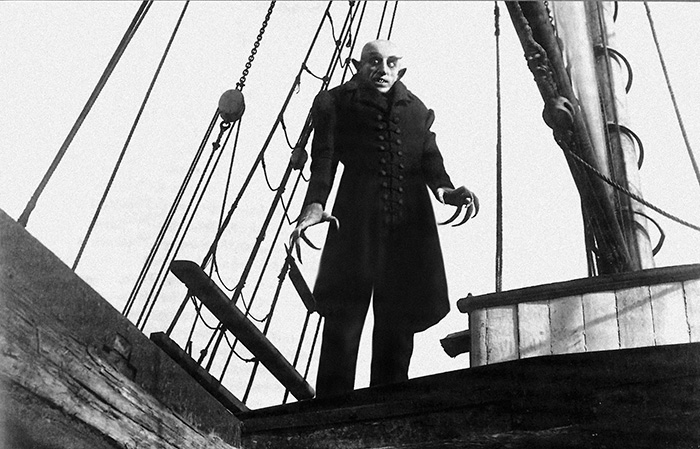
Halloween falls on a Monday this year, but like most holidays, the celebration often begins early. One such salute happens the previous Thursday, Oct. 27, when Count Orlok comes to town.
Who? Count Orlok is the name of the “Carpathian” undead whose story is told in the 1922 film, Nosferatu, directed by the German filmmaker F.W. Murnau. The movie may be the first film about Count Dracula, and the script closely follows Bram Stoker’s 1897 horror novel, Dracula.

A moody, black-and-white impressionistic film, it is a classic in the silent film canon; the presentation at the Raven Performing Arts Theater will be introduced by Mike Traina, a film and media instructor at Santa Rosa Junior College and the new programmer for AVFilms.
The screening will include a live piano accompaniment by Frederick Hodges, whom Traina describes as “an accomplished silent film accompanist and scholar… He is a purist, exclusively playing scores (or performing music) that would have been heard during the film’s original release.”
Pairing of live music with silent films is a tradition dating to the earliest days of cinema. In fact, portions of a musical score for the original Nosferatu have been discovered, and there are several versions of the movie that use the material—but Hodges is more likely to draw on his own deep familiarity with the music themes and tropes of the era.
The question of why the film is called Nosferatu and the count isn’t named Dracula is an intriguing sidelight of film history. The German filmmakers failed to get rights to the characters, and clumsily attempted to mask their larceny with name changes and a few plot adjustments.
But it fooled no one, and the Stoker estate—the author died in 1912, probably of tertiary syphilis—sued to prevent the film’s release. “The name was changed because the Bram Stoker estate wouldn’t sell the German production company the rights,” explains Traina. “Ultimately, they were sued, and all prints of the film were ordered to be destroyed.
“Miraculously, a surviving negative turned up in the U.S. after the novel was in the public domain and the copyright claim couldn’t still be pursued.”
So the first movie of Stoker’s novel—originally titled The Un-Dead—itself could not be killed.
Like Dracula, legends have grown up around the film Nosferatu as well. It was remade in 1979 as Nosferatu the Vampyre by Werner Herzog, with the troubled actor Klaus Kinski in the title role.
More intriguingly, there has been a long-standing rumor that the stage actor who played Count Orlok in the original film, Max Schreck, was himself a vampire. The depiction is indeed uncanny, spooky and weird: The rumor gave rise to the 2000 film, Shadow of the Vampire, starring Willem Defoe as Schreck and John Malkovich as the director F.W. Murnau. For fans of horror, that’s one to sink your teeth into.
The 100 year anniversary of Nosferatu will be recognized with a screening at the Raven Theater (115 North St.) on Thursday, Oct. 27, at 7pm. Tickets $15, students; $5, at the door if available or raventheater.org.







